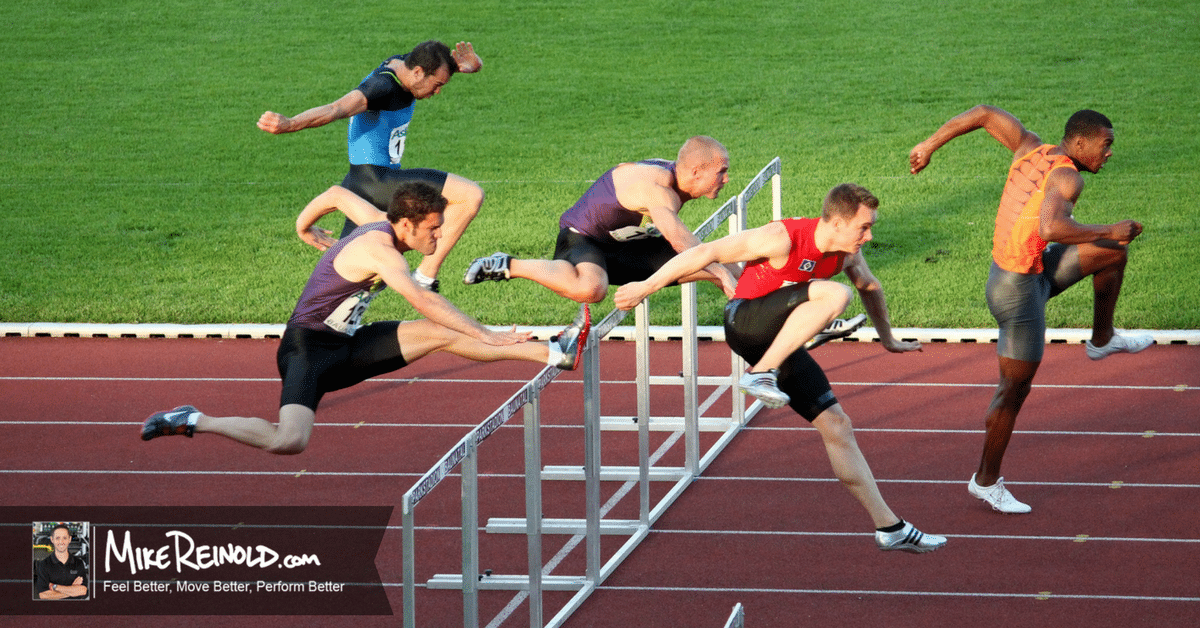When it comes to hamstring strains, two things are certain:
- They are very common in athletes, with research showing almost 30% of all lower extremity injuries in sports are hamstring strains.
- The recurrence rate is high, with research showing up to a 30% recurrence rate for hamstring injuries.
Call me crazy but I feel like the recurrence rate is just way too high, showing that we either are rushing people back too soon, don’t have an adequate return to sport criteria, or simply are not rehabilitating these hamstring strains very well.
It’s likely a combination of the three. We can do better.
4 Mistakes People Make When Rehabilitating Hamstring Strains
In my experience, people often make 4 common mistakes with hamstring strain rehabilitation. By focusing on these 4 key areas, I think we can do a better job returning athletes to their sport following hamstring strains, and keep them out on the field without reinjuring their hamstrings.
Loading the Hamstring Too Early
The first mistake I often see is simple. People often load the hamstring tissue too early.
I think it’s obvious that contracting a strained hamstring causes pain, so this is often avoided, but for some reason people tend to want to stretch through this pain and discomfort, thinking that if they get looser it will feel better.
I don’t think this is true, and overstretching too early is just going to delay healing. In fact research has shown that too much stretching can actually delay the return to sport.
This can occur in the rehabilitation setting, but also from the athlete themselves as the constantly want to stretch or “test” the area throughout the day.
One of the easiest things you can do acutely after a hamstring strain is to avoid stretching. Don’t get me wrong. I want to start some gentle range of motion in the acute phase, but I don’t want to stretch the tissue that was essentially just damaged by an overstretch type of injury.
Trust me, take a step back in the acute phase and avoid stretching and you are putting the tissue in a position to succeed in the future phases on rehabilitation when we need to start applying more load.
Not Performing Eccentric Exercises
It has been theorized that hamstring strains are so common due to the large eccentric contractions observed during the swing phase of running as the hip flexes and the knee extends.
This seems to make sense.
So it also makes sense that hamstring strain rehabilitation and even prevention programs that incorporate eccentric hamstring exercises tend to have better results.
After a hamstring strain, it has been shown that eccentric hamstring strength is impaired.
The common theory is that there is a change in the force-length relationship of the hamstring after an injury, resulting in peak force at a shorter length. But, eccentric training shift this relationship and allow peak force at a longer length.
This makes is important to include eccentric exercises for the hamstring during rehabilitation. I also recommend you include eccentrics with exercises at various degrees of hip flexion, for example the Nordic hamstring exercise at 0 degrees, and a single leg RDL, which includes hip flexion.
Not Performing Dynamic Hamstring Exercises
While it’s important to include eccentric exercises, I’m actually surprised at how little I read about people recommending dynamic exercises.
It’s one thing to perform a slow eccentric contraction, and another to perform a dynamic and explosive contraction.
I often use lower body plyometrics for this, as it allows both a rapid eccentric contraction, followed by an explosive concentric contraction. That’s what happens in sports.
Returning to Sports Too Early
Several studies have been published showing that many athletes return to sport too early, showing signs of hamstring weakness and imbalances.
Part of the problem is that there is no validated criteria to determine return to sport. But, we are getting there.
It’s probably best to understand the factors that are associated with prolonged hamstring injuries, you can read a nice review of those in AJSM.
But we also may have a new clinical test that can be performed. The Askling test involves have the person rapidly perform an active straight leg raise to assess their ability to perform and pain.
It has been shown that the recurrence rate of hamstring strains that passed the Askling test was less than 4%, much lower than the normal rate.
How to Diagnose and Treat Hamstring Strains
For those that want to learn more about how I rehabilitation hamstring strains, including the postoperative rehabilitation follow hamstring repairs, I have an Inner Circle presentation on the Diagnosis and Treatment of Hamstring Strains that overviews my approach to these injuries. Click below to learn more:






